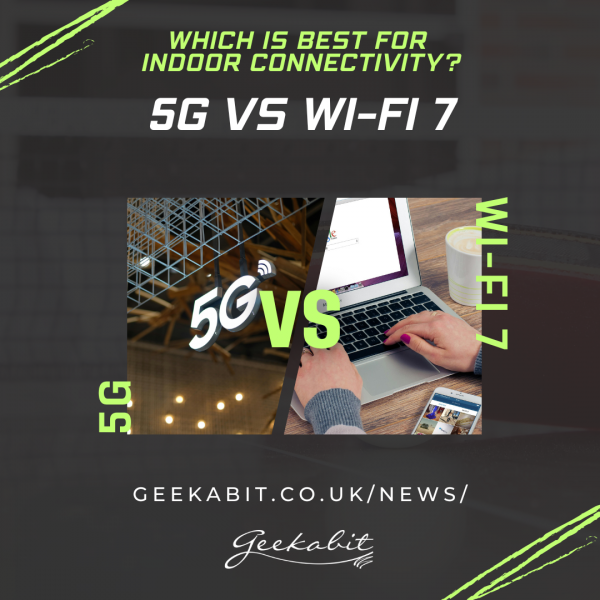As you can imagine, here at Geekabit we’re a bit geeky when it comes to all things wireless. It’s really in the name isn’t it?
Our spare time is often taken up with reading the latest on Wi-Fi and other wireless communications. Which of course includes 5G! We read a lot of information related to our field, but a blog from cwnp.com really stood out to us as an excellent explanation of 5G and how it works.
We couldn’t resist sharing this info with you too!
Let’s start with the basics – RF
When we talk about low, mid and high 5G we’re referring to the frequencies used. Radio Frequency (or RF) travels in waves – Just like sound or light! In simple terms, RF waves are non-visible electromagnetic waves.
Let’s make it easier to understand with a bit of visualisation. Imagine you are sitting on the beach, watching the waves as they hit the sand. If you were to count how many waves hit the shoreline in one minute, that would be the frequency.
In RF, we measure waves per second rather than a minute, but the premise is the same.
5G Frequencies
Image from cwnp.com
In the above image from left to right, you are looking at 5G low (purple), 5G mid in the middle (turquoise) and then 5G high at the end (red).
In the sea visualisation, the higher the frequency, the more water is being moved (the more waves hitting the shoreline). In RF, instead of water being moved it’s data. So the higher the frequency, the more data can be moved.
There is unfortunately a downside to higher frequencies. Whilst they are able to move more data, receiving and processing that data across greater distances is a challenge.
5G: What are the low, mid and high bands?
Let’s take a closer look at each one in turn.
5G LOW
The strategy for 5G low is to use the lower band to provide coverage nationwide. This is because whilst it has lower data rates, it travels further. To enjoy the benefits of 5G lowband, the 5G needs to be standalone. This means not using 5G down and 4G up.
Here in the UK, Vodafone were the first operator to offer customers a trial of their 5G standalone network in January of this year. Customers who opted in to the trial should see better reliability, coverage and battery life.
5G MID
In 5G mid band we find the sweet spot. Not only do we get a decent range from this band, but its higher frequency allows us to see 600 Mbps to 1 Gbps speeds down.
Interestingly, the 5G mid band is very similar to Wi-Fi frequencies and travel in a similar way. Where it differs to Wi-Fi is thecarriers ability to transmit at a higher power levels. This means that you can use much weaker signals to a better effect than Wi-Fi.
This 5G mid band is aimed for use in urban areas, city centres and suburbs.
5G HIGH
The 5G high band is extremely high throughput (how many units of information a system can process in a given amount of time). This band could see speeds of 10Gbps.
Unfortunately, because it is such a high frequency, it doesn’t travel well at all. This band works best with ‘line of sight’ as almost any obstruction can significantly block the signal.
You’re most likely to see this 5G high band in city centres where a mast or tower is put on the tallest building to transmit the signal, and receivers or antennas are put on the roofs of other buildings giving a clear line of sight between the two.
You can see a visual representation of the 5G low, mid and high bands in the image below, again from cwnp.com with thanks.



